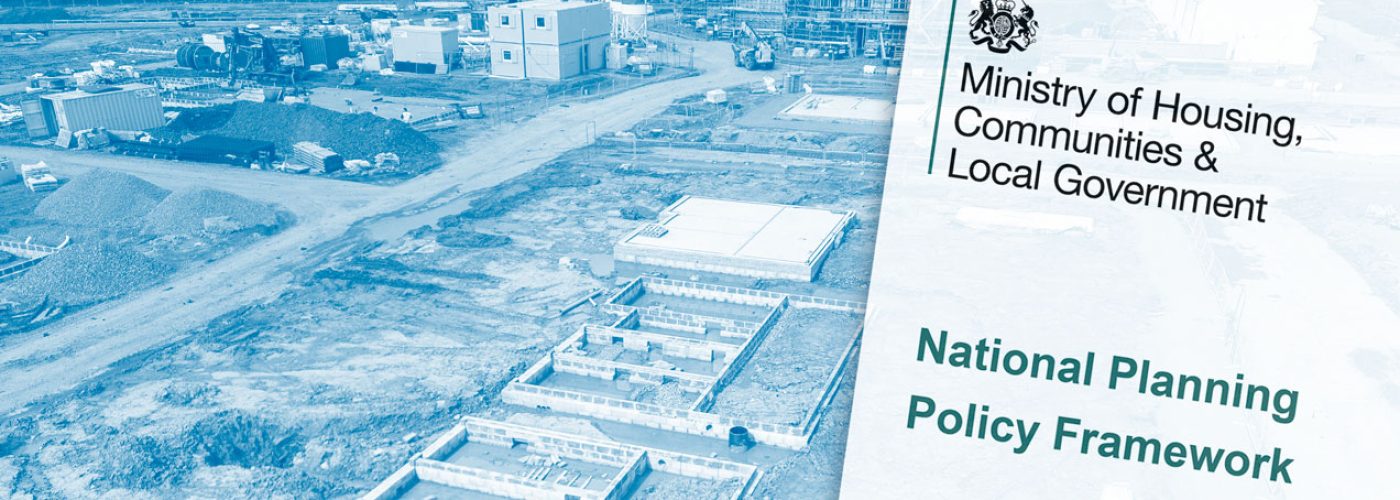Kush Rawal, Executive Director of Customer Services at Metropolitan Thames Valley Housing, comments:
“Social housing is a microcosm of our wider society, and often we work with people experiencing acute challenges impacting the quality of their day to day lives. The cost of living crisis and factors such as health and educational inequalities, financial and food insecurity are some of the issues that impact our residents. The funding pressures faced by public sector bodies and charities continue to create support gaps which housing providers have filled even when these extend beyond our traditional areas of focus. It is important that social housing providers support where appropriate, but we can’t do this alone or without adequate financial support.
“Turning specifically to Care and Support, recruitment remains a considerable challenge. There’s already a 20% vacancy across the sector, and the recent employer’s national insurance increase will put further pressure on the viability of services. Despite this, we cannot lose sight of the fact that we have a collective social responsibility to the most vulnerable in our society. Ensuring care and support commissioners are adequately funded will be vital to ensuring these services remain operational.
“In 2025 I’d like to see greater funding given to care and support commissioners to enable them to support these important services.”
Tom Dodson, Chief Operations Officer at Better Green Living, commented:
“As we approach the end of the year, we anticipate significant growth in the retrofitting and refurbishment sector to address the rising demand for premium green working spaces. With hybrid working and studying prevalent across the country, the need for communal spaces has become essential. This growing demand offers an opportunity for spaces to undergo sustainable refurbishment instead of building new spaces from scratch. And with an aligning focus on sustainability amongst the property industry, it’s more important than ever, that our designs are fit for purpose, and we utilise as much of our existing buildings as possible.
“The demand for student accommodation is at an all-time high, with 2.2 million students projected to require housing by 2026. This presents a significant opportunity to develop these high-demand hubs. However, to meet this need, the industry must address the existing skills gap. Building a strong and diverse workforce is essential in delivering the retrofit work necessary for the UK’s transition to net zero. This can only be achieved by additional Government support to provide the younger generations with retrofitting training to develop and expand their skills. With the expected rise for retrofitting projects and a focus on greener solutions in doing so, we continue to stay ahead of the curve.”
Simon Vernon-Harcourt, Design & Planning Director at City & Country:
“The Labour Party is making great strides in the right direction, and the potential opportunity for enhancement is huge. It will be a massive challenge to change the system given how under-resourced local planning authorities are, and how entrenched the ‘nimby’ culture is in the system.
So far, we have heard many soundbites about recruiting new planning officers, but unfortunately, the devil is in the details – something we are currently lacking.
There’s a very ambitious housing target above our heads, and to fulfil this, we need the policy of loosening the green belt delivered promptly. This will enable the development of sustainable communities and help create new places for people to live, work, and play. I hope we will start to see a shift next year with the housing market from political point scoring toward tangible action.”
Chris Harris, Chief Operating Officer at Dandara:
“The Government has positioned housebuilding as a key driver of economic recovery, signalling its commitment to boosting the economy – a goal in which housing plays a crucial role. The UK’s pressing need for new homes makes this focus both timely and essential.
Labour’s proposed policy changes, particularly its plans to simplify and expedite the planning process through amendments to the NPPF, could present significant opportunities for SMEs like ours to increase housing delivery nationwide. However, it remains uncertain whether these commitments will translate into actionable outcomes.
For buyers, the financial landscape remains challenging. Rising rents, higher mortgage rates, escalating energy costs, and the ongoing cost-of-living crisis are all barriers to homeownership, especially for first-time buyers. In the coming year, I hope to see the Government take decisive action to address these issues and promote greater accessibility to homeownership.”
Adrian Watts, Chief Executive at Croudace Homes:
“We have suffered in the past from Nimbyism across the country, which has held back housing delivery. Given the stark change to a pro-housing government, it will take some time for Labour to implement significant changes. Whilst the noise so far has been positive, I expect limited progress to be made next year, as the delivery of these changes will not happen overnight.
The proposed changes to the National Planning Policy Framework (NPPF) will help, but without sufficient resources and recruitment within Local Planning Authorities, progress will be too slow to dramatically shift the outlook of these departments.
We also need Registered Social Landlords to be in a strong position to contract on S106 housing if delivery is to first be maintained and then increased alongside the rise in housing demand. Finally, with no support for first-time buyers, we will struggle to increase our housing stock and risk leaving a generation behind, stuck in the vicious cycle of renting.”
Craig Carson, Managing Director at Barratt West London, comments:
On policy
“The Government has inherited a difficult environment from its predecessors. It has a challenge on its hands to even begin to tackle London’s housing shortage, with a target of 80,000 new homes per year in the capital alone. This is clearly an ambitious target but demonstrates a shared vision between Government and housebuilders alike that we absolutely must build more homes.
Not only does the Government need to introduce measures that keep the homebuying and selling market moving, it needs to support housebuilders from the very beginning. The National Planning Policy Framework and new towns funding are two immediate positive introductions from the Government. Housebuilding is clearly central to the Government’s plans, with a recognition of both the social benefits and economic growth potential by increasing the country’s housing output.
There has also been much discussion around the elusive grey-belt and how this could unlock swathes of land, alongside reforms to the London Plan next year. I would like to see Labour define exactly what this is at both a Government and GLA level, and work with housebuilders on planning reforms to transform currently disused areas for the benefit of whole communities.”
On market outlook
“There is a cautiously optimistic view as we head into 2025. London’s market has unique challenges due to its property prices and demand for new homes. The market will also suffer when stamp duty thresholds change next year, with the average first time buyer in London required to pay an additional £11,000 on stamp duty costs alone.
We have evolved to address some of these challenges and introduced our own schemes to support buyers in the absence of a formalised scheme – whether this is offering deposit contributions to key workers, reduced mortgage rates via our Own New scheme, or other low-deposit solutions such as Deposit Unlock.”
On the skills gap
“The ever-growing skills gap is a ticking time bomb in the construction sector, and whilst we absolutely need more skilled tradespeople to help build the 1.5m homes planned by Labour, we will struggle to build anywhere near this number unless employment figures drastically increase within planning offices.
It is positive that the Government has announced funding for 300 additional planning roles, which are seldom part of the discussion, however, in practice this will barely scratch the surface of the true deficit. We also must consider the time it will take to train planning graduates. It takes around two years to train a graduate in housebuilding, and assuming aspiring planners follow the same pathway, this will not be an overnight fix. There is already a backlog of applications, and a drive to boost housing deliver will further exacerbate the problem.”
On planning
“The layering of planning policy in London also doesn’t help, with planning officers at both local and regional levels often supporting the same applications. Greater collaboration across the Greater London Authority (GLA) and the Local Authority will allow for the accurate determination of applications referable to each Authority and free up time accordingly. This will allow more flexibility to apply resources across London where the need is greatest.
Other long-term solutions include the National Planning Policy Framework, which will naturally take some time to translate into Local Plans, and the introduction of both the grey belt and additional funding for new towns. These are all positive actions to support long-term housing delivery across the country.
In the immediate future, mandatory housing targets will have a significant and indeed quicker impact, and I suspect we will see this play out early next year across each of London’s boroughs, alongside the rest of the country. However, this may lead to pressure on The Planning Inspectorate (PINS) with Local Authorities not resourced to deal with the likely influx in applications following the NPPF changes. Applicants may pursue aggressive planning strategies involving a quick pre-application process with an appeal for non-determination if no decision is given at 13 or 16 weeks.”
Trevor Wilkins, Managing Director at PAH Building & Construction
“It has been a challenging year for the UK construction industry. The sector has faced a significant workforce crisis, with the loss of 210,000 workers since 2023, exacerbated by an aging workforce. This shortage has hindered progress, slowed growth, and put immense pressure on businesses across the industry.
Yet, the horizon holds promise, with the CITB’s CSN report showing a forecasted 8% increase in underlying project starts in 2025 and a further 10% in 2026. There has always been a demand for workers; the UK’s construction output continues to grow, but now, we’re facing a desperate need to match industry growth with a skilled workforce.
“If we are to bridge the skills gap, we urgently need a joined-up approach to recruit, train and upskill talent. Without this, we will be unable to deliver the vital construction and infrastructure this country needs – a responsibility that starts from the Government.”
Jim Baxter, Director of Allanwater Homes
On the 1.5m homes target
The government’s target of 1.5 million homes is ambitious but achievable, translating to 300,000 homes annually. In Scotland, this means delivering 123,000 homes over five years, which boils down to 24,600 per year. In 2022, Scotland managed to build over 23,000 homes, so this goal isn’t unachievable, but the industry needs to be equipped with the right tools from the government in order to do this. To get there, the government would need to reinstate mandatory housing targets and drastically reform the planning process. The process would be assisted if they supported infrastructure like roads, services and even public transport. Additionally, incentives for first-time buyers, such as stamp duty relief or targeted financial assistance would all go a long way to achieving this goal.
On planning and the skills shortage
There is a serious skills shortage in Scotland. Last year, the UK Trade Skills Index reported that 31,000 new recruits are needed across the country over the next decade in order to plug the skills gap. Funding for planning departments, such as graduate intake and training, is promising but requires scalability and sustained investment to reduce the current backlog. We need to be aware that while plans to provide extra resources is promising, anything that is decided won’t be an immediate fix, as it will take years for this to be brought fully to fruition. A new calculation method for housing need is vital to establish clear, actionable targets.
Building, Design & Construction Magazine | The Choice of Industry Professionals





